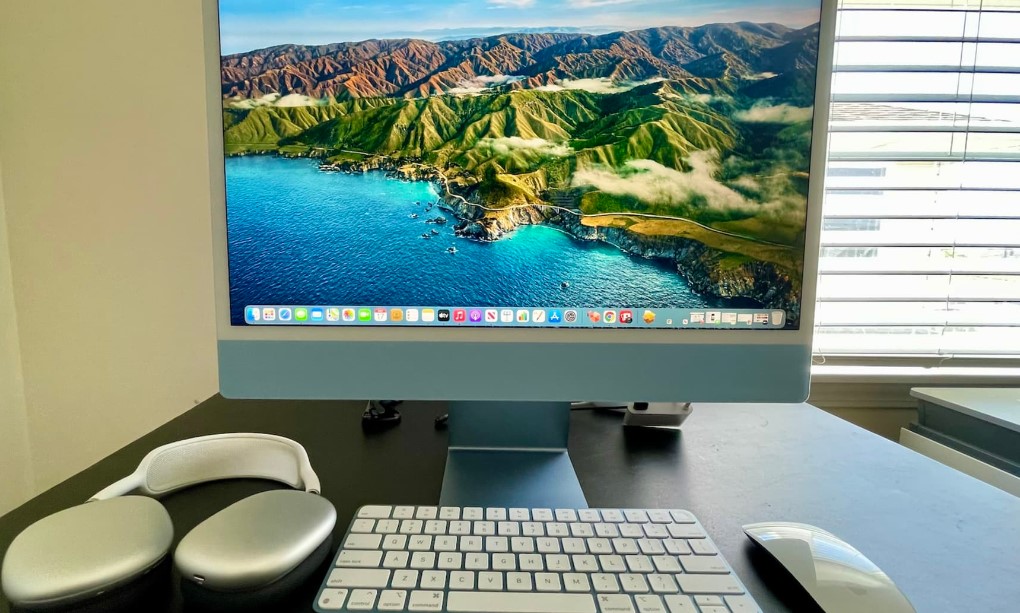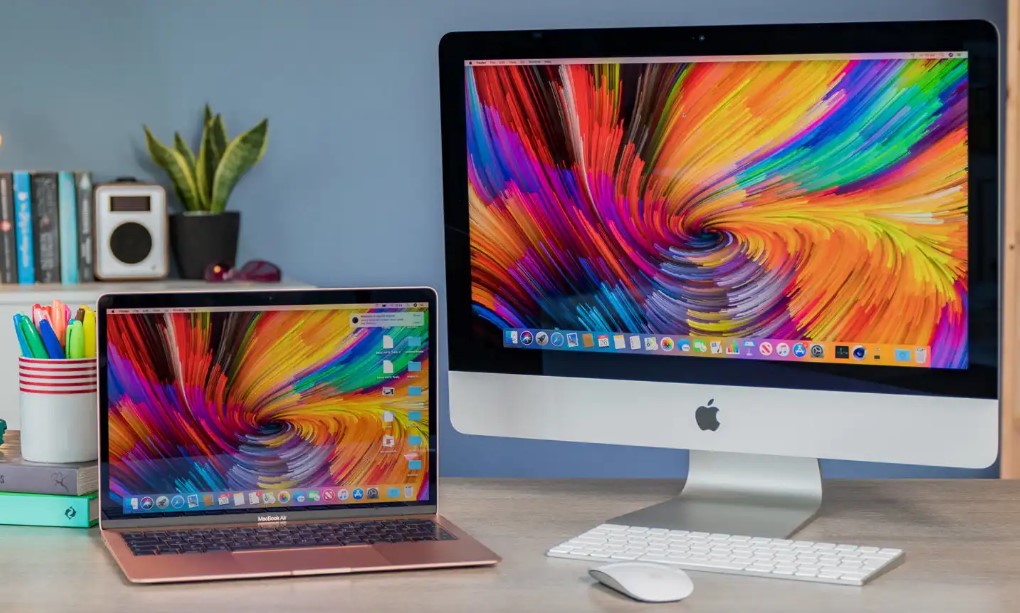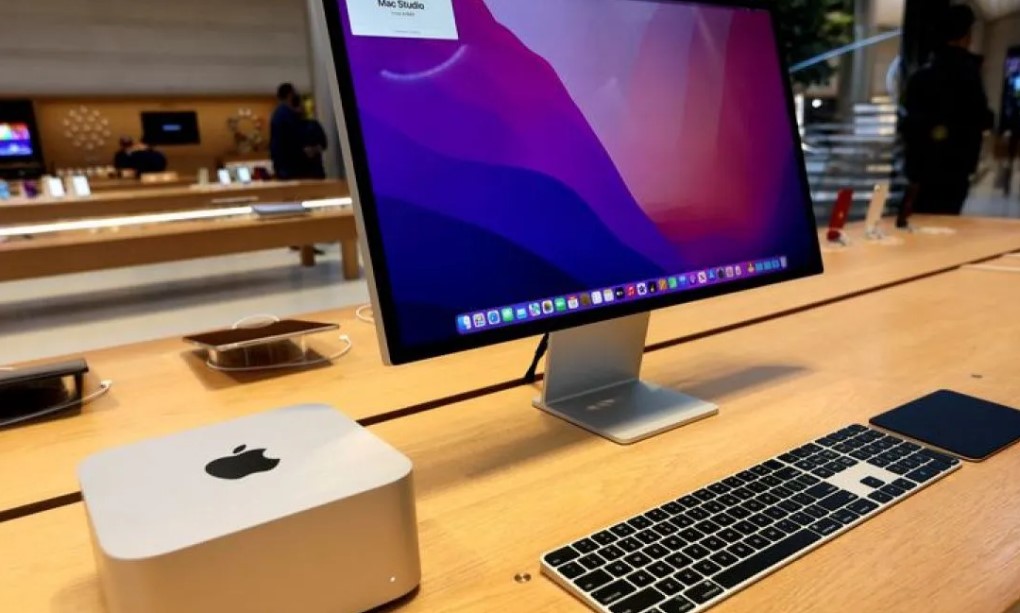Apple Desktop Solutions for Every Need in 2024
Apple desktops are a popular choice among professionals, creatives, and everyday users due to their elegant design, cutting-edge technology, and seamless integration with other Apple products. From the sleek, all-in-one iMac to the compact yet powerful Mac Mini, and the performance powerhouse Mac Studio, Apple desktops offer a wide variety of options for different needs. This guide will delve into the features, benefits, and use cases of each Apple desktop model, while also providing insights on how to purchase the right desktop for your needs.
What is an Apple Desktop?

An Apple desktop refers to any desktop computer manufactured by Apple Inc., known for their unique blend of aesthetic design and powerful performance. These desktops are built with macOS, Apple’s operating system, and are ideal for users who seek a dependable, high-performance machine. The three main models in the Apple desktop lineup are the iMac, Mac Mini, and Mac Studio.
Apple desktops stand out for their advanced hardware, intuitive software, and sleek designs, making them ideal for users in fields such as graphic design, video production, music creation, programming, and general computing. Apple’s ecosystem, which includes the iPhone, iPad, and MacBook, ensures that these devices integrate seamlessly with each other, providing a streamlined user experience.
Types of Apple Desktop

Apple offers a range of desktop computers designed to cater to different needs. From casual users and students to creative professionals and power users. Each model offers distinct features, performance capabilities, and design options to suit various workflows and computing needs. In this section, we will explore the three main types of Apple desktops: the iMac, Mac Mini, and Mac Studio. Each of these desktops is designed with specific use cases in mind, making them perfect for different types of users.
1. iMac
The iMac is Apple’s flagship all-in-one desktop. It combines high-end performance with a sleek, minimalist design. Making it one of the most popular Apple desktops among professionals, creatives, and home users. The iMac is available in multiple screen sizes and configurations, with the most recent models featuring the powerful Apple M1 chip.
Key Features of the iMac:
- Display: One of the standout features of the iMac is its Retina display. The 24-inch iMac, for instance, comes with a stunning 4.5K Retina display, which offers vibrant colors and sharp details. The larger 27-inch model, available with Intel processors, offers a 5K Retina display.
- M1 Chip: With the introduction of the M1 chip in the 24-inch iMac, Apple significantly improved the performance and energy efficiency of the desktop. The M1 chip integrates the CPU, GPU, and Neural Engine into one piece of hardware, allowing for faster processing speeds, improved graphics, and seamless multitasking.
- Design: The iMac’s design is slim and elegant, making it ideal for users who want an aesthetically pleasing desktop without compromising on performance. The all-in-one design means that the monitor, processor, and speakers are housed in a single unit, saving desk space and reducing cable clutter.
- Customizability: The iMac offers a variety of color options, allowing users to choose the finish that best suits their preferences or workspace aesthetic. Additionally, the system comes with a range of storage and memory options, allowing you to customize the iMac to meet your specific needs.
Best For:
The iMac is perfect for creatives, such as photographers, graphic designers, and video editors, who need a high-quality display and powerful performance in a compact, all-in-one design. It is also a great choice for general consumers who want a reliable, easy-to-use desktop for everyday tasks like web browsing, email, and multimedia consumption.
2. Mac Mini
The Mac Mini is a compact desktop that packs impressive performance into a small form factor. Unlike the iMac, the Mac Mini does not come with a built-in display, so users must pair it with their own monitor, keyboard, and mouse. Despite its small size, the Mac Mini offers robust computing power, especially with the introduction of the M1 chip in its latest version.
Key Features of the Mac Mini:
- Compact Design: The Mac Mini is one of the smallest desktops available from Apple, making it an ideal option for users with limited desk space. Its small size makes it easy to transport and set up in various workspaces, whether in a home office or a professional environment.
- M1 Chip: The 2020 Mac Mini, equipped with the M1 chip, offers significant performance improvements compared to its Intel-based predecessors. The M1 chip provides faster processing, better energy efficiency, and improved graphics performance, allowing the Mac Mini to handle demanding tasks like photo and video editing with ease.
- Ports and Connectivity: Despite its small size, the Mac Mini offers multiple ports, including USB-C, HDMI, and Ethernet, allowing for easy connectivity with external monitors, storage devices, and other peripherals.
- Affordability: The Mac Mini is often seen as a more budget-friendly option compared to other Apple desktops, making it an attractive choice for users who want the power of a Mac without the higher price tag.
Best For:
The Mac Mini is ideal for users who need a compact desktop that can handle a wide range of tasks. It’s particularly well-suited for users who already have a monitor and peripherals or for those looking to build a custom desktop setup. Its affordability makes it an attractive option for small businesses, home offices, and students.
3. Mac Studio
The Mac Studio is Apple’s most powerful desktop, designed for users with demanding workloads. This model is a workstation-level computer that comes equipped with the M1 Max or M1 Ultra chips, offering cutting-edge performance for tasks like 3D rendering, video production, and software development. The Mac Studio is aimed at professionals who need an extremely powerful machine to handle the most resource-intensive tasks.
Key Features of the Mac Studio:
- M1 Max and M1 Ultra Chips: The Mac Studio is available with either the M1 Max or the even more powerful M1 Ultra chip. The M1 Ultra, which features up to 20 CPU cores and 64 GPU cores, is designed for users who need extreme processing power. The M1 Max also provides excellent performance but is slightly less powerful than the M1 Ultra.
- Multiple Display Support: The Mac Studio supports up to four 6K displays, making it a great option for users who need multiple screens for multitasking, video editing, or design work.
- High RAM and Storage Configurations: The Mac Studio supports up to 128GB of unified memory and up to 8TB of SSD storage, making it ideal for users who work with large files or run complex applications. The large memory capacity ensures smooth performance, even with heavy multitasking or high-end creative tasks.
- Design: While the Mac Studio is powerful, it maintains a small, compact form factor. It is housed in a small, square aluminum case that doesn’t take up much space on a desk, making it ideal for users who need high performance but don’t want a bulky desktop.
Best For:
The Mac Studio is designed for professionals in industries like film production, 3D modeling, software development, and scientific computing. Its immense processing power and large memory capacity make it ideal for users who require top-tier performance for demanding workflows.
Benefits of Using an Apple Desktop

Apple desktops offer a range of benefits that make them an attractive option for users across various fields. Let’s explore the key advantages in greater detail.
1. Unmatched Performance and Efficiency
Apple desktops, especially those equipped with Apple’s proprietary M1 chip, deliver exceptional performance. The M1 chip integrates the CPU, GPU, and Neural Engine into a single chip, enhancing speed and efficiency. This means that tasks such as video editing, photo manipulation, and complex computations are completed faster, with significantly less energy consumption.
The M1 chip’s architecture, based on ARM technology, has proven to outperform traditional Intel chips in both raw performance and energy efficiency. This chip is not only powerful but also allows for enhanced battery life in portable devices and lower power usage in desktops. Users experience faster load times, smoother multitasking, and greater responsiveness when running demanding applications.
2. Exceptional Design and Display Quality
Apple is renowned for its design, and this extends to its desktops. The iMac, in particular, is celebrated for its stunning 4.5K Retina display, which offers exceptional clarity, color accuracy, and sharpness. The display is ideal for creatives who require precise color reproduction, such as photographers, designers, and video editors.
In addition to its visual appeal, the iMac’s design is minimalist, with a slim profile and integrated stand. This compact form factor helps to save desk space while still offering a large, immersive screen. On the other hand, the Mac Mini and Mac Studio, while smaller and more compact, can easily connect to 4K, 5K, or even 6K displays, depending on the user’s needs.
3. Seamless Integration with the Apple Ecosystem
Apple desktops are part of the larger Apple ecosystem, which includes devices such as iPhones, iPads, and MacBooks. This seamless integration allows users to easily transfer files, sync apps, and use features such as Handoff, AirDrop, and Universal Clipboard between devices.
For example, with Handoff, you can start working on an email on your iPhone and pick it up on your Mac without missing a beat. AirDrop makes sharing large files between Apple devices incredibly simple, while Universal Clipboard lets you copy content on one Apple device and paste it onto another. These features make Apple desktops an excellent choice for users already invested in Apple’s ecosystem.
4. Advanced Security and Software Optimization
Apple’s macOS operating system is designed with security and stability in mind. Apple integrates hardware and software in a way that enhances overall system performance, ensuring fewer crashes and better security protection. Features like FileVault encryption protect user data, and macOS includes built-in safeguards against malicious attacks and malware.
Since macOS is optimized for the specific hardware in Apple desktops, the system runs smoothly and efficiently, ensuring a more reliable computing experience compared to other platforms. Regular software updates from Apple further enhance the security and performance of Apple desktops, keeping them up-to-date with the latest features and fixes.
5. Longevity and Durability
Apple desktops are known for their longevity and high-quality build. While they may have a higher upfront cost compared to many other brands. Their durability and performance over time justify the investment. Apple typically supports its devices with software updates for many years, extending their useful lifespan and keeping the system up to date.
In addition, Apple desktops are built with premium materials, ensuring they last longer. The hardware is engineered to be durable, and the software optimization ensures that the desktop continues to run efficiently even as it ages. This makes Apple desktops a reliable long-term investment.
Use Cases of apple desktop

Apple desktops, including the iMac, Mac Mini, and Mac Studio, are designed for diverse use cases, thanks to their powerful performance, sleek design, and seamless integration with the Apple ecosystem. Below are the primary use cases of Apple desktops:
1. Creative Professionals (Graphic Design, Video Editing, Photography)
- High-quality Display: The iMac’s 4.5K or 5K Retina display provides excellent color accuracy, making it ideal for photo and video editing.
- Powerful Performance: The M1 chip in the iMac and Mac Mini handles resource-intensive tasks such as high-definition video editing and 3D modeling with ease.
- Mac Studio for Heavy Workloads: The Mac Studio with M1 Max or M1 Ultra chips is perfect for professionals working on complex video production, 3D rendering, and animation.
2. Software Development and Programming
- Efficient Coding: Apple desktops support powerful development tools like Xcode for building macOS and iOS apps.
- Fast Processing: The M1 chip offers rapid execution of code, allowing developers to compile large codebases quickly.
- Multi-monitor Setup: Mac Studio supports up to four 6K displays, enhancing productivity for developers by allowing multiple windows to be open simultaneously.
3. Business and Office Productivity
- General Office Tasks: Apple desktops are ideal for tasks like word processing, spreadsheet management, and managing email communications.
- Compact iMac for Small Offices: The all-in-one iMac is great for businesses with limited workspace.
- Affordable Mac Mini: The Mac Mini offers a cost-effective desktop option for small businesses, while still providing powerful performance for office tasks.
4. Home Office and Education
- Remote Work and Learning: The iMac is perfect for home offices and students who need an all-in-one desktop for video conferencing, research, and assignments.
- Compact and Efficient: The Mac Mini is a space-saving solution for individuals who already have a monitor but need a reliable desktop for everyday tasks.
5. Creative Studios and Agencies
- High-volume Design Work: Agencies that handle large-scale design, video production, or marketing campaigns can rely on the Mac Studio for its exceptional speed and performance.
- Multiple Display Support: The ability to connect multiple 6K displays to the Mac Studio makes it a great choice for teams that need to work on multiple projects simultaneously.
FAQs
1. What’s the difference between the iMac and Mac Mini?
The main difference between the iMac and Mac Mini is that the iMac is an all-in-one desktop with a built-in display, whereas the Mac Mini is a compact desktop that requires a separate monitor. The iMac is perfect for users who want a space-saving desktop with a high-quality display, while the Mac Mini is ideal for users who already have a monitor or need a more customizable setup.
2. Is the Mac Studio worth the price?
The Mac Studio is designed for professionals who require maximum performance. If you’re working with resource-intensive applications like video editing, 3D rendering, or software development, the Mac Studio provides unparalleled power. For casual users, however, it may be overkill and not worth the high price tag.
3. Can I upgrade the RAM on my Apple desktop?
Upgradability varies between models. The Mac Studio allows for RAM upgrades at the time of purchase, while the iMac and Mac Mini feature soldered RAM, meaning they cannot be upgraded after purchase.